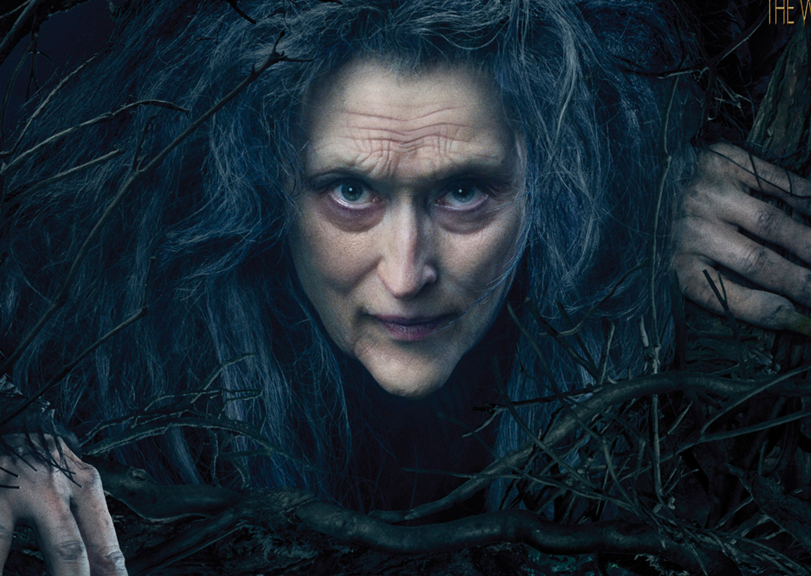8 Lyrics That Describe the Into the Woods Viewing Experience
Feb 3, 2015 • Patricia Calzo Vega

Feb 3, 2015 • Patricia Calzo Vega
“Careful the things you say, children will listen.”
When “Into the Woods” opened on Broadway in the 1987 theater season, it cast a spell on audience and critics alike, winning Best Book, Best Score, and Best Actress in a Musical at the 1988 Tony Awards. More importantly, it started the pop culture conversation on subversive fairy tale tropes; now-classic stories like “Shrek” or “Wicked” would not have been told if creators Stephen Sondheim and James Lapine did not carve the path that let audiences wander into the woods and come out transformed by the experience.
With the musical now firmly ensconced in the canon of contemporary fairy tales, it should come as no surprise that Walt Disney would take a shot at recreating it for a new generation—having already shown viewers how fairy tale characters live outside their stories (TV’s “Once Upon a Time”) and how villains are not always evil, just misunderstood (“Maleficent”). In other woods, “Into the Woods” is right up its alley, from its fair maidens and princes, intrepid children and curses, down to its show-stopping musical numbers.
Sondheim’s tunes are notoriously difficult to sing, but his lyrics are always on-point: as humorously clever or emotionally resonant as the song needs to be. And because this review has to come in a list, here are eight lines from the musical that best describe the movie adaptation.
The prologue is an absolute joy to watch: almost fifteen minutes of non-stop musical exposition, its sound rendered vibrant and crystal-clear the way musical soundtracks are sound to be. (It helps that the actors can actually sing). CGI and other post-production enhancements transform the fairy-tale setting into location that one can plausibly believe to exist. This reminds knowing members of the audience that this movie will not have the overtly meta, slightly cheeky side-eyeing of the musical. Expectations are set, what remains to be seen is whether they will be met at the end of the movie.
Changes are inevitable when compressing a two-act, three-hour musical into a one-act, two-hour movie. As expected, there were a few nips and tucks to the story—all done with the consent of Sondheim and Lapine, who were actively involved in the production—but not all changes are created equal. Some have taken advantage of the medium and transformed song that rely solely on exposition into something more dynamic. The best example of this is the showpiece, “On the Steps of the Palace”, which Sondheim revised to incorporate the movie’s interpretation, which shows Cinderella (Anna Kendrick) as she escapes the festival ball, instead of her just reminiscing about it in the woods.
Another major change is casting young actors as Little Red Riding Hood (Lilla Crawford) and Jack (Daniel Huttlestone), instead of having seasoned actors in their late teens or early twenties tackle the roles. This presents younger viewers with characters that they can relate to. The downside is that—especially for young Jack—some of the double entendres disappear with the youthful interpretation and somewhat changes the character’s relationship with his mother (Tracey Ullmann).
Or, in the case of Little Red Riding Hood and the Wolf (Johnny Depp), the increased age gap may make the performance slightly more disturbing. The Wolf’s movie costuming is less deliberately predatory than the one in the original musical, but its Prohibition-era aesthetic and Depp playacting himself as a wolf makes his scenes a little out of place.
But sometimes a change of pace is a breath of fresh air. The absence of the cheeky Narrator/Mysterious Man character lent a more somber tone to the movie, which in turn, relied largely on the two Princes (Chris Pine and Billy Magnussen) for comic relief. Their signature song “Agony”—performed with over-the-top, romance-novel hero gusto, was such a crowd favorite at the press screening. It’s a shame its reprise was cut for expediency—this robbed the audience of more princely preening, and also pruned their storylines significantly.
While the prologue identifies four concurrent journeys into the woods, much of the musical rests on the quest of the Baker (James Corden) and his Wife (Emily Blunt) to undo the curse that renders them childless. Blunt is especially compelling in her portrayal of the Baker’s Wife, who will do anything to have a child, and who sometimes dreams of having a different life. The Baker less so—in part, because his relationship with his father (Simon Russell Beale in a cameo appearance) is barely touched on and his song of epiphany “No More” is cut from the final soundtrack.
Another diminished storyline is that of the Witch (Meryl Streep), whose heartbreaking relationship with Rapunzel (Mackenzie Mauzy) is cut short by wildly different circumstances, making her admonishment about children more cynical than world-weary. But Streep sells it anyway, by not attempting to do a Bernadette Peters and making her own mark (less Jewish mama, more Devil Wears Prada) on the role.
Comparisons to the musical aside, the movie is one enjoyable journey that will have you singing along and believing—against all odds—in happily ever after.
Photos courtesy of Walt Disney Studios.
Into the Woods is now screening in theaters nationwide.
Did you like the film? Share your thoughts in the comments section below!
Input your search keywords and press Enter.
